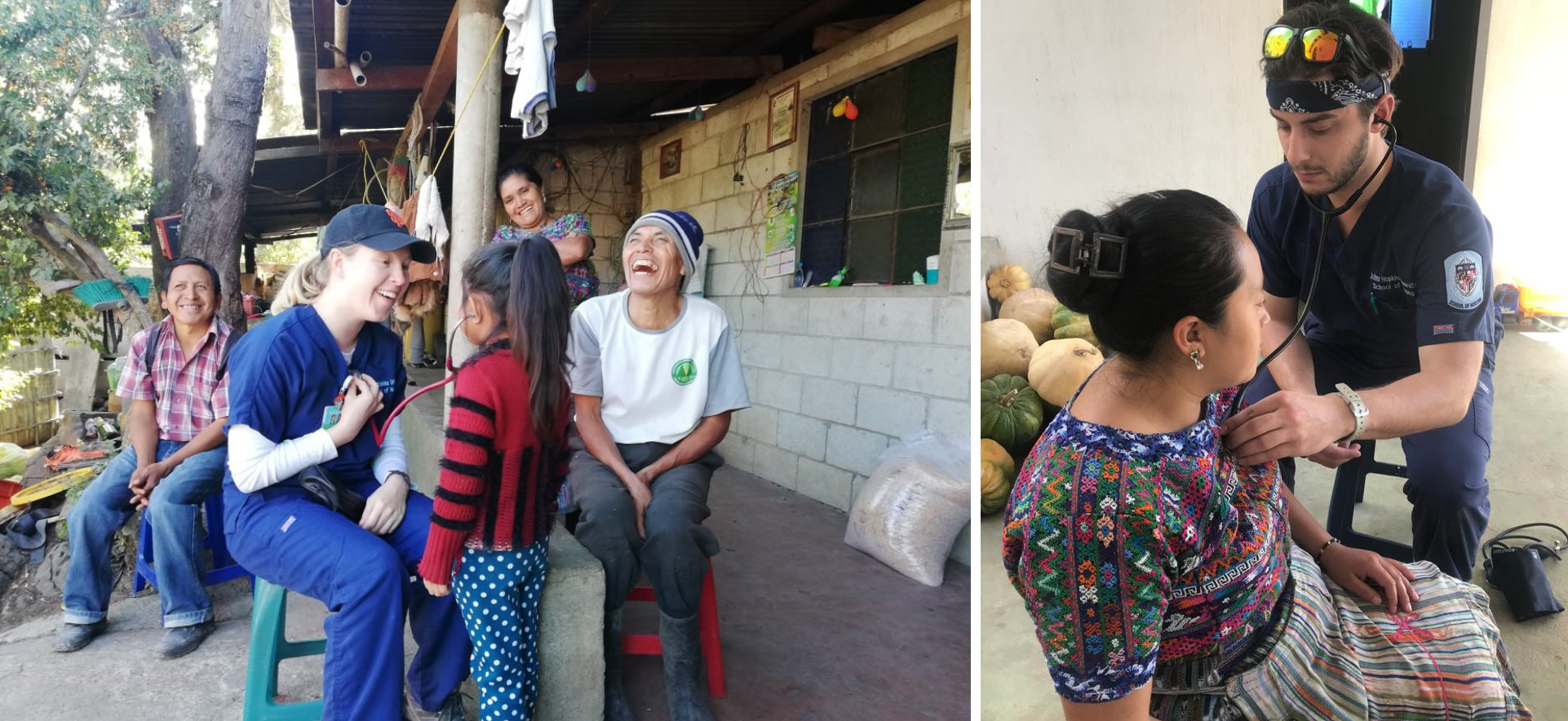At Corniche hospital on the Main Delivery Unit (MDU), there are only midwives and doctors. There is no such thing as a Labor & Delivery Nurse in the UK healthcare model. Thus, my partner and I have had to explain numerous times the system in America, where L&D nurses do all the patient cares, and midwives or doctors come in to handle the delivery. Instead, midwives do all the patient cares and deliver the babies. Occasionally the doctors are called for high risk patients or abnormal fetal heart rates. My partner, Taylor, and I both want to be midwives someday, so this is an ideal learning situation for us. We practice as L&D nurses, but learn all the aspects of a functioning midwife.
Here, the midwife-to-patient ratio is 1:1, meaning that once a patient is admitted to the MDU, she is assigned one midwife for the duration of her labor. That midwife works only with that patient, and stays in the room with the patient throughout labor and delivery. So I am paired with Dom, a midwife from the UK who has been working at Corniche for 2 years now.
At the beginning of our 12 hour shift today, we were assigned to our patient, a primiparous woman admitted to the MDU at 03:45 at 3cm dilation, 50% effacement and posterior cervix. We introduce ourselves to Katya, who is from Syria, her husband and her mother. Katya is coping well with her contractions, but tired from a long night of no sleep. Her family is warm and full of humor, and I look forward to working with her, although the fact that this is her first child means today might be a long day. “Primips”, as we refer to them, have longer labors, as the uterus, cervix, and body are not familiar with childbirth and have to “learn” for the first go around. Dom and I assess her external fetal monitoring and determine that the baby is doing beautifully, so we discontinue the monitoring and switch to intermittent fetal monitoring. Hooray! Although low risk women should all be on intermittent monitoring, it is not a practice often seen. Most women are placed on continuous monitoring of the fetal heart rate from the minute they are admitted to the hospital, even though international guidelines state that it should be otherwise. So for now we are just assessing the fetal heart rate every 15 minutes. I encourage Katya to get up and walk, even though she is tired. We get a birthing ball, aka yoga ball, and have her sit on that for a while, encouraging baby’s head to press on the cervix and promote dilation. Then we walk the hallways for a bit. But eventually she opts for the bed, because she is exhausted. Her husband keeps asking, “How long will it take?” We reassure him constantly that everything is normal, and labor takes a long time. He is anxious and impatient! Katya continues to cope well, and at her next exam is found to be 6cm. Her membranes are ruptured by the midwife, and her contractions begin to increase noticeably. This is the peak intensity of the day. Katya loses control, crying and screaming, unable to bear with labor. At each contraction she cries “Madifini! Madifini” — “I cannot bear it anymore!” But eventually she calms and is able to cope. However, this raises her husbands anxiety visibly. He cannot bear to see his wife in pain, and eventually begins to fight, saying, “Where is the doctor to explain this situation? I want to know what is happening.” The funny thing is, no matter where you are in the world, everyone wants to know what is happening. But with labor, it is not something you can have answers to. There is no answer to how long it will take, no answer to when.
Eventually they decide on the epidural, which exactly what the doctor ordered, so to speak. Katya is calm, her husband leaves to get some food and a break. The labor continues, but Katya can smile and feel more at ease. Finally, near the end of our shift, we check her again. Fully dilated, at 0 station. There is some caput, or swelling, on the head and you can see the baby’s hair. This is good news, and yet again the husband wants to know, “How much longer?” Patience we reply. Lets let Katya labor down, because she cannot feel from the epidural and thus has no sensation to push. We try a few pushes, to no avail. Finally, it is 7:30pm, time for my shift to end. But I stay. I cannot leave until the baby has come, I decide. I’ve grown close to this family. I’ve rubbed Katya’s back through her contractions, reassured her and calmed her when she was stressed. Learned new Arabic words from the mother and husband.
This is where I realize that the line between doula and midwife is too blurred for me. As a doula, I stay with the family until the child is delivered, I hold the mother’s legs, encourage her to push, give her updates on progress, calm her, congratulate her and coo to her new baby. As a midwife, in a hospital, on shift duty, I would go home at the end of my shift, regardless of the baby’s arrival. But because I am a student, and in that funny limbo of not really being on shift work yet, I stay. This time, I have the luxury to stay, even though I will not always get to make that choice. So I hold Katya’s leg while she pushes. I encourage her in my new Arabic words, and I watch her beautiful baby girl come into the world. “Mabrook!” Her husband is crying, Katya is smiling. They thank me over and over, and I am happy to be a part of their magical day. Mash’Allah!
 Birth Companions Talk Doulas and Maternal Health with Mayor Brandon Scott
Birth Companions Talk Doulas and Maternal Health with Mayor Brandon Scott Global Service Learning: Guatemala
Global Service Learning: Guatemala Guatemala Re-visited: Rainwater Project Shows Value of Service-learning Trips
Guatemala Re-visited: Rainwater Project Shows Value of Service-learning Trips You’re Welcome
You’re Welcome My First Teachers in Nursing School Weren’t Nurses
My First Teachers in Nursing School Weren’t Nurses






